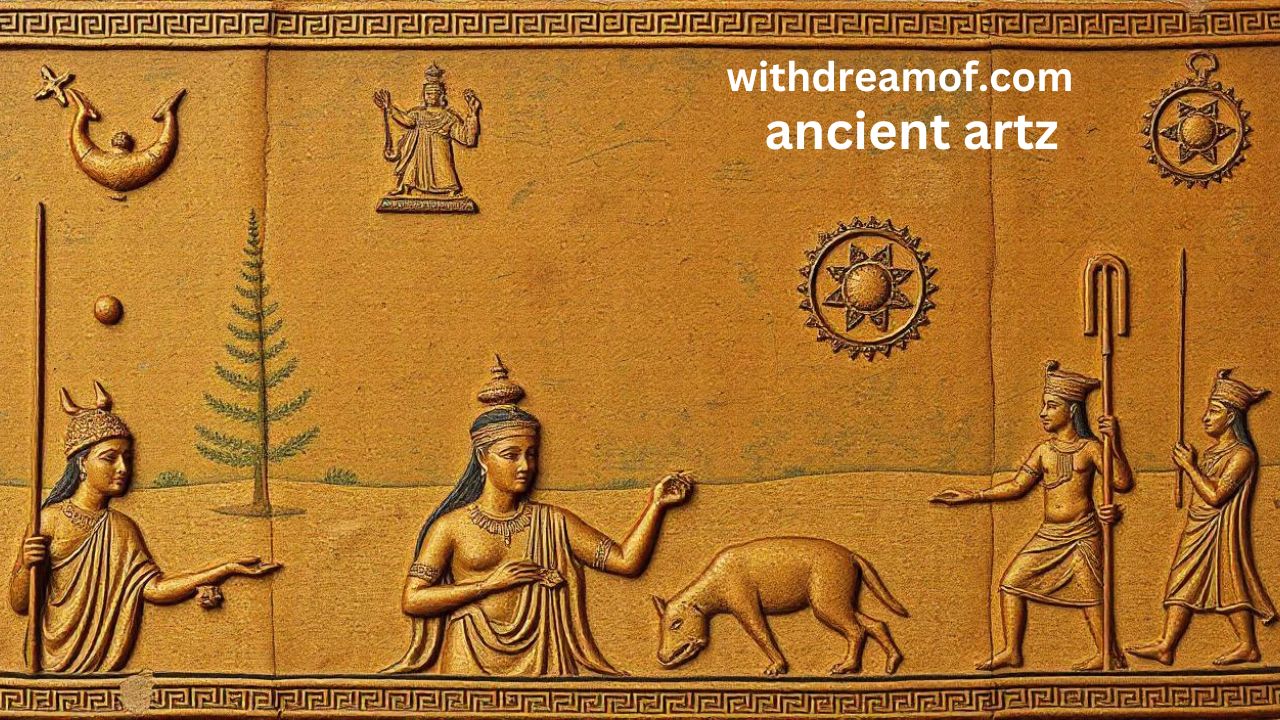The captivating world of ancient artz offers glimpses into the lives, beliefs, and creativity of early civilizations. These timeless masterpieces showcase humanity’s ingenuity and its desire to communicate through visual expressions. Whether carved into stone or painted on clay, ancient artz reflects the cultural identities that shaped our world. Exploring this rich heritage deepens our appreciation for the innovative minds of the past.
Defining Ancient Artz
Ancient artz encompasses creative works produced by early human societies, often serving religious, political, or cultural purposes. These pieces include sculptures, pottery, cave paintings, mosaics, and jewelry.
Each artwork tells a story, revealing insights about the people who created it. Early artists used natural materials like pigments, stone, and clay to craft their visions. Their efforts laid the foundation for artistic traditions that influence modern creativity.
The Origins of Ancient Artz
The origins of ancient artz can be traced back to prehistoric times. Early humans expressed themselves through cave paintings and carvings on tools and rocks.
These works, such as the famous Lascaux cave paintings in France, provide evidence of early artistic endeavors. Artists used pigments made from minerals to depict animals, humans, and abstract designs. These creations highlight their need to document their surroundings and share their experiences.
Cave Paintings: Humanity’s First Canvas
Cave paintings represent some of the earliest examples of ancient artz. These works often depicted animals like bison, deer, and horses.
Artists created these images using fingers, brushes made from twigs, and natural dyes. These paintings served both decorative and symbolic purposes, often linked to rituals or storytelling. The vibrant colors and detailed depictions reveal the artistic talent of our ancestors.
Sculptures: Three-Dimensional Expressions of Culture
Ancient sculptures embody the craftsmanship and cultural values of early civilizations. Societies like Mesopotamia, Egypt, and Greece produced iconic three-dimensional works.
Stone, clay, and bronze became common mediums for sculptors. These materials allowed them to create durable representations of gods, rulers, and mythological figures. Sculptures like the Venus of Willendorf and Egyptian busts exemplify the artistic diversity of ancient artz.
Pottery: Function Meets Artistic Flair
Pottery holds a special place in the realm of ancient artz. Early civilizations combined functionality with artistic expression to create stunning ceramic pieces.
From Greece to China, potters crafted jars, vases, and bowls adorned with intricate patterns and depictions. These works served practical purposes like storing food while showcasing the aesthetic preferences of their creators.
The Role of Ancient Artz in Religion
Religion played a significant role in shaping ancient artz. Many early artworks focused on spiritual themes, conveying reverence for deities or cosmic forces.
Temples, altars, and religious icons featured detailed carvings or paintings. For instance, Egyptian tomb art celebrated the journey to the afterlife, while Hindu sculptures honored gods like Vishnu and Shiva. These pieces connected communities to their faiths and fostered spiritual unity.
Symbolism in Ancient Artz
Symbolism frequently appeared in artz, conveying complex ideas through visual elements. Artists used symbols to represent power, fertility, or protection.
The ankh in Egyptian art symbolized eternal life, while Chinese dragons depicted strength and good fortune. These symbols served as a universal language, allowing messages to transcend cultural and linguistic barriers.
Cultural Diversity in Ancient Artz
Ancient artz reflects the incredible diversity of human cultures. Every civilization added unique elements to its artistic traditions, reflecting distinct beliefs and lifestyles.
In Africa, tribal masks emphasized spirituality and storytelling, while indigenous Australian art used dots and lines to depict Dreamtime stories. Asian art introduced harmony and balance, evident in Zen-inspired calligraphy and gardens. This diversity enriches the global art narrative.
The Golden Ages of Ancient Artz
Several periods marked golden ages of artz, producing iconic works that remain influential today.
- Ancient Egypt: Monumental works like the Great Pyramids and the Sphinx defined this era of grandeur and devotion.
- Classical Greece: Statues like the Discobolus exemplified balance, proportion, and movement in human form.
- Ancient Rome: Mosaics, frescoes, and monumental architecture highlighted the sophistication of Roman society.
- Ancient China: Dynasties like Han and Tang produced pottery, calligraphy, and sculptures that embodied innovation.
These golden ages illustrate the enduring legacy of artz across civilizations.
Preservation of Ancient Artz
Preserving artz remains a crucial task for archaeologists, historians, and conservationists. Many artworks face threats from natural erosion, looting, and environmental changes.
Museums, research institutions, and UNESCO collaborate to protect and restore ancient artifacts. Their efforts ensure future generations can appreciate these cultural treasures. Modern technology, like 3D scanning and AI analysis, further enhances preservation.
Modern Appreciation for Ancient Artz
Today, ancient artz inspires countless people through exhibitions, books, and documentaries. These works provide valuable insights into human history, creativity, and resilience.
Artists and designers draw inspiration from ancient motifs, adapting them to contemporary aesthetics. By appreciating these masterpieces, we connect with the shared heritage that unites humanity.
Frequently Asked Questions
What is ancient artz?
Ancient artz includes creative works like paintings, sculptures, and pottery from early civilizations, reflecting their culture and beliefs.
Why is artz significant?
Ancient artz reveals humanity’s ingenuity and offers insights into the traditions, spirituality, and daily lives of early societies.
How did ancient artists create their works?
Artists used natural materials like stone, clay, and pigments to craft durable and visually striking creations.
What role did religion play in artz?
Religion inspired many artworks, serving as a medium to honor deities, depict spiritual journeys, and unite communities.
How can we preserve artz?
Preservation efforts include museum storage, digital documentation, and restoration projects led by archaeologists and conservationists.
How does artz influence modern creativity?
Ancient motifs and techniques inspire contemporary art, architecture, and design, blending historical traditions with modern innovation.
Conclusion
The enduring legacy of art continues to captivate and inspire people around the globe. These timeless masterpieces showcase humanity’s creative spirit and cultural diversity, providing a bridge between the past and present. By preserving and celebrating these works, we ensure that their stories remain an integral part of our shared history. Artz, with its profound depth and beauty, reminds us of our collective journey through time.











